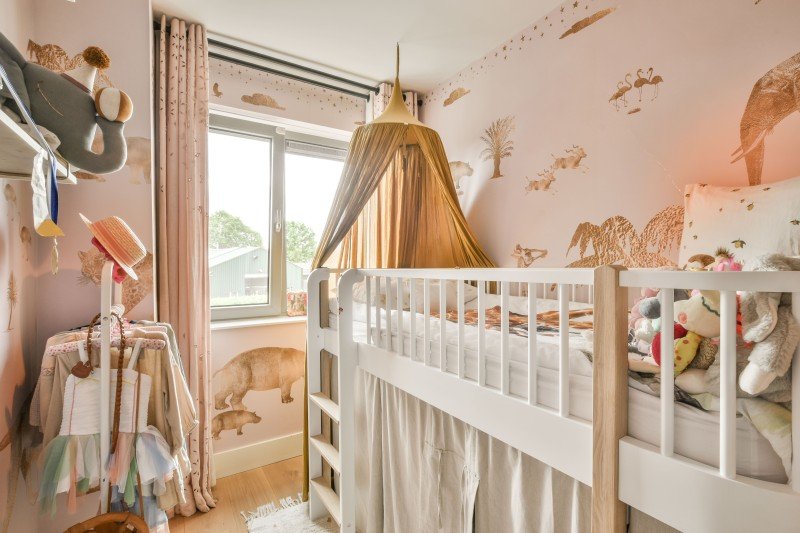A Comprehensive Guide to Children's Bunk Beds: Styles, Benefits, and Safety Considerations
Bunk beds have actually ended up being a popular option for families looking to optimize space and offer an enjoyable sleeping environment for children. With Bunk Bed On Sale , they use an imaginative and practical service for shared bedrooms, playrooms, or even guest accommodation. This short article checks out the numerous designs of children's bunk beds, their benefits, safety considerations, and responds to some often asked questions.
The Allure of Bunk Beds
Children's bunk beds are more than simply space-saving structures; they are likewise an entrance to adventurous dreams and creative play. Below is an in-depth examination of their many advantages.
Advantages of Bunk Beds
- Space-Saving: Bunk beds effectively make use of vertical space, making them a perfect option for smaller rooms.
- Playful Design: Many bunk bed styles consist of slides, tents, and themed aspects, stimulating creativity and excitement.
- Partner Sharing: Bunk beds are ideal for brother or sisters sharing a space or accommodating sleepovers.
- Flexible Use: Some models can be separated into 2 specific beds, providing flexibility as children grow.
- Storage Options: Many bunk beds include integrated drawer storage or shelves, even more improving their usefulness.
Styles of Children's Bunk Beds
The range of bunk beds available today deals with different preferences and needs. Below is a summary of some popular styles.
| Style | Description | Best For |
|---|---|---|
| Standard Bunk Bed | A conventional style including one bed stacked above another. | Brother or sisters sharing a room. |
| Loft Bed | Similar to a bunk bed without the bottom bunk, allows for a work space or play location below. | Minimal space for play/desk. |
| L-Shaped Bunk Bed | 2 beds set up in an L-shape, typically with extra sections for storage or play. | Unique space layouts. |
| Twin Over Full | A twin bed over a complete bed, accommodating various sleep requirements. | Growing children and teens. |
| High Sleeper | Stands even higher than a loft bed, generally including a desk or play area below. | Older kids requiring more play/desk space. |
| Tent Bunk Bed | Bunk beds with a canopy or tent-like structure, producing a relaxing, enjoyable space. | Active and imaginative kids. |
Key Features to Consider
When selecting the best bunk bed for kids, the following features deserve considering:
- Material: Bunk beds can be made from wood, metal, or a mix. Each has its special visual and sturdiness.
- Weight Capacity: Always validate the weight limitation of the bunk bed to ensure it can accommodate your children securely.
- Safety Rails: Ensure the top bunk has sturdy rails to avoid falls.
- Ladder Security: A well-designed ladder must offer easy and safe access to the upper bunk.
- Finishing: Ensure any finishes are non-toxic and safe for kids.
Security Considerations
Security is paramount when it concerns kids's bunk beds. The following guidelines must be adhered to:
- Age Appropriateness: Generally, children under 6 years old must not sleep in the upper bunk due to safety dangers.
- Durable Construction: Ensure the frame and products are strong and can support the weight without sagging.
- Regular Maintenance: Periodically look for loose screws, bolts, or other parts that might need tightening.
- Clear Play Area: Keep the location around the bunk bed without toys and challenges to reduce tripping risks.
Setting Rules for Safe Use
Developing standards for bunk bed use will help ensure safety:
- Limit Jumping and Climbing: Children need to be advised against leaping from the top bunk and climbing on the sides.
- Monitoring Sleepovers: Monitor young guests while they are using the bunk bed for the first time.
- Educate on Ladder Use: Teach how to utilize the ladder safely, emphasizing the value of facing the ladder when climbing or down.
Frequently Asked Questions
1. What age is suitable for a kid to oversleep the top bunk?
A lot of makers suggest that kids should be at least six years old to sleep in the upper bunk. This standard is designed to mitigate the threat of falls.
2. Can bunk beds be personalized?
Yes, numerous producers provide personalized alternatives, consisting of colors, materials, and extra functions like drawers or desks.
3. Are bunk beds safe for weight?
Bunk beds have weight limitations, generally varying from 200 to 400 pounds, depending upon the design and product. Always inspect the producer's specifications.
4. How do I keep and clean up a bunk bed?
Frequently look for loose parts, keep the bed clean by wiping down surfaces, and make sure the bed linen is fresh to promote a safe and hygienic sleep environment.
5. Can bunk beds be separated into individual beds?
Lots of bunk beds come with an option to separate them into two private beds, supplying long-term adaptability.
Kid's bunk beds are more than simple furniture; they are a functional, flexible, and creative component of a child's space. With numerous designs available and various safety factors to consider to bear in mind, moms and dads can pick the ideal bed that fits their space, meets their children's requirements, and imparts a sense of adventure. By comprehending the benefits, designs, and safety measures associated with bunk beds, families can produce a delightful and safe sleeping environment for their kids. Whether for siblings sharing a room or space-saving solutions, bunk beds remain a beloved choice for numerous homes.

